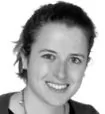Patent applicants in the field of immuno-oncology will be pleased to hear that they may now apply for accelerated examination of US patent applications directed to a method of treating cancer using immunotherapy.
President Obama's Cancer Moonshot Initiative aims to double the rate of progress towards a cure for cancer and the US Patent and Trademark Office (USPTO) has recently (effective as of 29 June 2016) introduced the Cancer Immunotherapy Pilot Program (www.gpo.gov/fdsys/pkg/FR-2016-06-29/pdf/2016-15533.pdf), which hopes to help advance this initiative. The pilot program has the goal of accelerating examination of US patent applications and to complete examination within 12 months of the request for accelerated examination.
Fortunately for applicants, requests for accelerated examination are free, but applicants should be aware that there are a number of conditions that must be met in order for a request for accelerated examination to be successful. Not only must these conditions be met in order for the request to be successful, but they must continue to be met throughout examination in order for the patent application to remain on the pilot program. A few of the main conditions are discussed below.
The pilot program is intended to run for only 12 months and, therefore, applicants must apply for accelerated examination before 29 June 2017. However, the USPTO may extend the program (with or without amendment).
International applications which have entered the US national phase, as well as US non-reissue, non-provisional utility applications, are eligible for the pilot program.
There are also certain conditions regarding the claims themselves. In particular, there must be at least one claim which is directed to a method of treating cancer using immunotherapy, but, for patent applications where examination has already started, it is not permitted to switch inventions in order to meet this condition.
The subject matter of the method claim is not specifically limited, and the method may be to ameliorating, treating or preventing a malignancy, although this must be in a human subject. The method must assist or boost the immune system in eradicating cancerous cells, and claims to administering any vaccine that works by activating the immune system to prevent or destroy cancer cells growth are also eligible. Furthermore, claims directed to the co-administration of biological adjuvants in combination with conventional cancer therapies are also eligible. On the other hand, it is not yet clear whether the claims must explicitly recite that the method is "for the purpose of treating cancer", or that the method uses immunotherapy or elicits an immune response. Therefore, amending the claims to recite this feature should be considered until this is clarified.
However, if the Examiner considers that the claims of the patent application are directed to more than one invention (restriction requirement), then the applicant has only two working days in which to select one invention, without traverse, by telephone interview with the Examiner. The elected invention must be a method of treatment of cancer by immunotherapy. If the applicant does not elect an invention, or does not elect a method of treating cancer by immunotherapy, then the Examiner will consider the first group of claims which are directed to such a method as the elected invention.
The above are only a taste of some of the conditions which must be met for a request for accelerated examination to be successful. The above are only a taste of some of the conditions which must be met for a request for accelerated examination to be successful. We have already had positive experiences of the program and, for one relevant application, the first examination report was issued only 11 days after the patent application was accepted onto the pilot program. The first examination report was, in fact, a restriction requirement and, as mentioned above, we were indeed allowed only two working days in which to respond by telephone interview.
It may be interesting to note that, although publication (or a request for early publication) of the patent application is another condition for accelerated examination, our request for early publication in fact led to publication being delayed by about a month, as compared to the originally-projected publication date. This does not appear to have affected the speed of prosecution of the application, so we continue to hope that examination will indeed be complete within 12 months. We hope to keep you updated as the case progresses.
The content of this article is intended to provide a general guide to the subject matter. Specialist advice should be sought about your specific circumstances.

